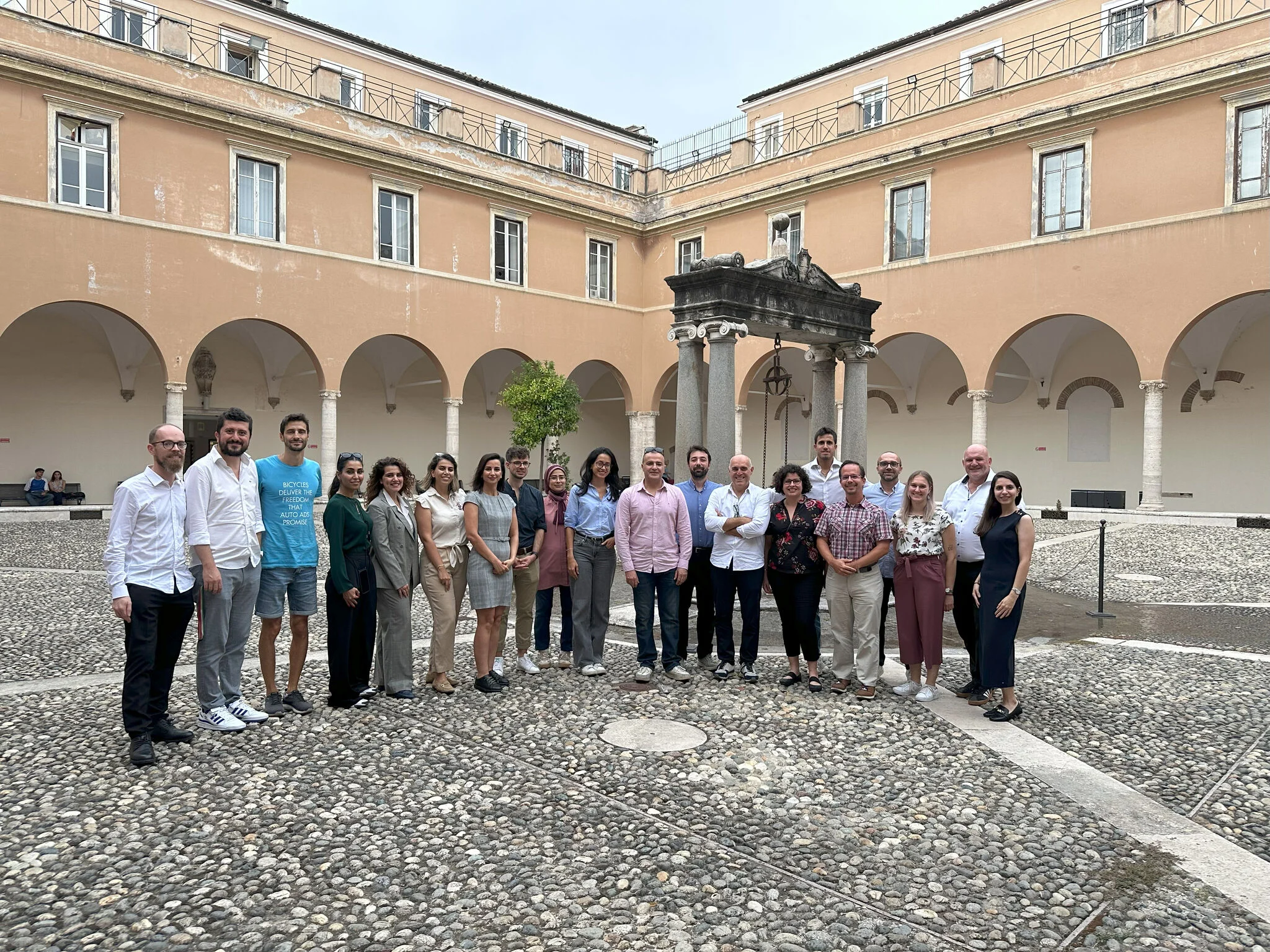ZHAW works on the future developments of the 15 Minutes City concept: Official launch of the DUT project “SmartUrbanity”.
The “15-minute city concept”, pioneered by Carlos Moreno in 2020, presents a compelling vision for urban living: neighbourhoods where residents can access all essential services — work, healthcare, education, shopping, and recreation — within a 15-minute walk or bike ride from their homes. SmartUrbanity advances this idea by ensuring the concept’s inclusive implementation: leveraging granular data and citizen participation to reflect the nuanced realities of diverse urban populations.

Rome, 22 September 2025 – SmartUrbanity has been officially launched. The project, funded by the EU under the Driving Urban Transition (DUT) program for the year 2025, focuses the attention on the development and implementation of the 15 Minutes City concept across different cities. The Kick Off Meeting has been held in Rome, at the University of Rome “La Sapienza”, which is also the project leader.
Urban environments worldwide are at a critical crossroads. Cities face mounting pressures from traffic congestion, air pollution, social fragmentation, and unequal access to essential services. SmartUrbanity brings together citizens, city officials, businesses, and researchers to work as partners in reshaping urban life. Digital platform will be provided to let residents share their experiences and ideas while giving policymakers the data and tools they need to make smart decisions. Through this approach, cities can understand what people really need, test different solutions, and create policies based on real evidence rather than assumptions. Moreover, the 15 Minute City concept is automatically defined for the specific city environment, where not only geographical aspects but also socio economical characteristics play a fundamental role for a successful strategy implementation.
Empowering Cities, Engaging Citizens
The SmartUrbanity project’s models and methods will be developed and applied in 5 Pilot Sites, namely Rome (Italy), Lyon (France), Zürich (Switzerland), Karlsruhe (Germany), and Izmir (Turkey). The idea is to reach a common foundation of basic data, which are useful to make comparison within the cities, and a specification for each pilot site, which depends both on the geographical and socioeconomic characteristics and on the strategic plan and measures adopted so far. To achieve this goal, 3 main tools will be developed and used in the 5 Pilot sites:
Citizen Engagement App. This mobile application brings citizens into an active engagement process, encouraging their contribution to urban development.
Accessibility Analysis (AA) Platform. Accessible via any web browser, this dynamic WebGIS platform serves both the community and policymakers by visualizing aggregated citizen data on urban transport issues.
Decision Support System (DSS) Platform. An extension of the AA Platform, this system is designed to help policymakers evaluate potential urban mobility interventions. It utilizes robust Agent-Based travel demand Models (AGMs) and machine learning (ML), integrating simulators and AI tools that process data from the Citizen Engagement App.
ZHAW's Activities: Integrated planning of Ridepooling services and conventional public transport systems.
The Smart Mobility Group at IDP will lead the project activities in the Zurich Pilot Site, in partnership with PostAuto. The group will be responsible for the development of MATSim-based agent-based simulation models to simulate the modal choice of the population’s travel demand, including demand-responsive transport systems like Ride Pooling services. The group is also responsible for dissemination and knowledge sharing activities within the project partnership.
This is a great opportunity to make evident how the 15 minute city concept, when contextualized in a specific urban environment, can help improving everyone’s life – said Valerio De Martinis, Senior scientist at Smart Mobility Group – leading to travel time reductions, less congestion and still supporting the mobility needs of the population.
More information can be found on the SmartUrbanity website, as well as updated news on the LinkedIn page